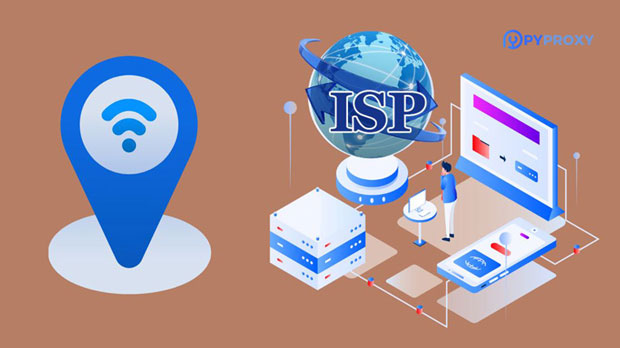Cache proxies have become an essential component of modern network infrastructure, especially in multi-user environments. These proxies act as intermediaries between users and the internet, storing copies of frequently accessed data to reduce latency and improve overall performance. By reducing the need for repeated retrieval of the same content from distant servers, cache proxies not only enhance user experience but also optimize the use of network resources. This article explores how cache proxies contribute to improving network performance for multiple users, detailing their benefits, working mechanisms, and real-world applications. Introduction to Cache ProxiesCache proxies serve as intermediate servers between users and the internet. When a user requests data, the proxy checks if it already has a copy of that data in its cache. If it does, it can serve the request directly, speeding up access. If not, it forwards the request to the origin server, retrieves the data, and stores it in the cache for future requests. This caching mechanism significantly reduces the load on network links and servers, improving overall performance.The Role of Cache Proxies in Multi-User EnvironmentsIn environments with many users, such as corporate networks, educational institutions, or public hotspots, the demand for network resources can be extremely high. Cache proxies play a vital role in optimizing this demand by providing several key benefits.1. Reducing LatencyLatency is one of the most critical factors affecting user experience, especially in applications requiring real-time data transfer, like video streaming, online gaming, and VoIP. By storing frequently requested content closer to the users, cache proxies help reduce the time it takes to access data. This is particularly beneficial when multiple users access the same content repeatedly, such as common web pages, video clips, or images. As the cached data is closer to the user, the time needed to fetch it is significantly reduced, enhancing user satisfaction.2. Optimizing Bandwidth UsageBandwidth is often a limited resource, especially in large networks or during peak usage hours. By caching data locally, cache proxies minimize the need for repeated downloads from the internet, thus reducing the overall bandwidth consumption. This not only ensures that bandwidth is used efficiently but also prevents network congestion, ensuring that users can access content without significant delays even in high-traffic situations. This is particularly valuable in educational and business settings where multiple users access similar resources.3. Reducing Server LoadCache proxies significantly reduce the load on origin servers by handling repeated requests locally. This is particularly beneficial for websites or services that experience high traffic volumes. By preventing the same data from being repeatedly fetched from the server, cache proxies reduce the number of requests hitting the origin server, allowing it to focus on unique requests. This not only improves the performance of the server but also reduces its operational costs and prevents potential system overloads.4. Enhancing Reliability and RedundancyIn multi-user networks, network failures or server downtime can impact users' ability to access content. Cache proxies help mitigate this issue by storing a local copy of frequently accessed content. In case of network or server failures, users can still access cached content, ensuring continuity of service. This enhances the reliability and availability of the network, making it more resilient to disruptions. Furthermore, cache proxies can be set to automatically refresh content, ensuring that users always get up-to-date data, even during partial network outages.5. Scalability for Growing User DemandsAs the number of users increases, so does the demand for data. Cache proxies help scale network performance by handling a larger portion of requests locally. Instead of each user needing to access the original server for every piece of data, cache proxies can serve a significant portion of requests. This scalability is crucial for large organizations or public networks, where a growing user base could otherwise lead to slower performance and network congestion. Cache proxies allow the network to scale without requiring massive increases in infrastructure costs.Working Mechanism of Cache ProxiesCache proxies work by storing copies of content that are frequently requested by users. When a user sends a request, the cache proxy checks its stored content to see if the requested data is available. If it is, the proxy serves it directly. If not, the proxy forwards the request to the origin server, retrieves the content, stores it in its cache, and then sends it to the user. Over time, the cache proxy learns which content is requested most often and prioritizes caching that data for faster future access.Real-World Applications of Cache ProxiesCache proxies are widely used in various settings to improve network performance for multiple users. Some of the most common applications include:- Content Delivery Networks (CDNs): CDNs are large networks of cache proxies designed to distribute content across multiple geographic locations. By caching content closer to the user’s location, CDNs improve access speed and reduce latency.- Corporate Networks: In large organizations, cache proxies help improve performance for employees accessing common resources like websites, intranet pages, and software updates.- Public Wi-Fi Networks: In public spaces like cafes, airports, or shopping malls, cache proxies help reduce bandwidth usage and provide faster access to popular content for users.- Educational Institutions: Cache proxies are used to optimize access to online learning resources, reducing load times for students and ensuring that content is always available, even during peak usage hours.Cache proxies are an indispensable tool for enhancing network performance in multi-user environments. By reducing latency, optimizing bandwidth usage, lowering server load, providing redundancy, and ensuring scalability, cache proxies significantly improve the user experience and make networks more efficient. In environments with high user demand, such as businesses, schools, and public hotspots, the value of cache proxies cannot be overstated. By implementing these technologies, organizations can provide faster, more reliable, and cost-effective access to online resources, ensuring that users can always access the content they need without unnecessary delays or disruptions.
May 16, 2025



































































